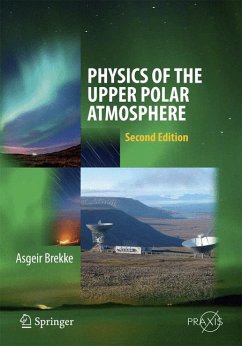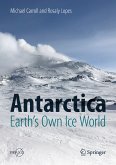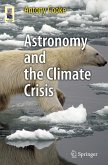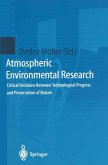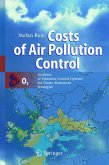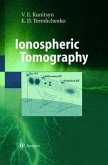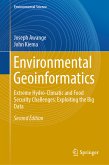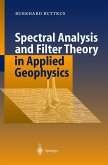Asgeir Brekke
Physics of the Upper Polar Atmosphere (eBook, PDF)
113,95 €
113,95 €
inkl. MwSt.
Sofort per Download lieferbar

57 °P sammeln
113,95 €
Als Download kaufen

113,95 €
inkl. MwSt.
Sofort per Download lieferbar

57 °P sammeln
Jetzt verschenken
Alle Infos zum eBook verschenken
113,95 €
inkl. MwSt.
Sofort per Download lieferbar
Alle Infos zum eBook verschenken

57 °P sammeln
Asgeir Brekke
Physics of the Upper Polar Atmosphere (eBook, PDF)
- Format: PDF
- Merkliste
- Auf die Merkliste
- Bewerten Bewerten
- Teilen
- Produkt teilen
- Produkterinnerung
- Produkterinnerung

Bitte loggen Sie sich zunächst in Ihr Kundenkonto ein oder registrieren Sie sich bei
bücher.de, um das eBook-Abo tolino select nutzen zu können.
Hier können Sie sich einloggen
Hier können Sie sich einloggen
Sie sind bereits eingeloggt. Klicken Sie auf 2. tolino select Abo, um fortzufahren.

Bitte loggen Sie sich zunächst in Ihr Kundenkonto ein oder registrieren Sie sich bei bücher.de, um das eBook-Abo tolino select nutzen zu können.
This is the only extended textbook that covers in particular the physics of the upper polar atmosphere where the polar lights demonstrates the end product of a process taking place at extremely high latitudes between the solar wind and the upper polar atmosphere. A textboook that meets the modern requriement for reading in order to obtain a master of science or a Dr. of science degree in upper polar atmosphere physics or the interaction between the soalr wind and the Earth's atmosphere
- Geräte: PC
- ohne Kopierschutz
- eBook Hilfe
- Größe: 17.09MB
Andere Kunden interessierten sich auch für
![Antarctica: Earth's Own Ice World (eBook, PDF) Antarctica: Earth's Own Ice World (eBook, PDF)]() Michael CarrollAntarctica: Earth's Own Ice World (eBook, PDF)32,95 €
Michael CarrollAntarctica: Earth's Own Ice World (eBook, PDF)32,95 €![Astronomy and the Climate Crisis (eBook, PDF) Astronomy and the Climate Crisis (eBook, PDF)]() Antony CookeAstronomy and the Climate Crisis (eBook, PDF)30,95 €
Antony CookeAstronomy and the Climate Crisis (eBook, PDF)30,95 €![Atmospheric Environmental Research (eBook, PDF) Atmospheric Environmental Research (eBook, PDF)]() Atmospheric Environmental Research (eBook, PDF)40,95 €
Atmospheric Environmental Research (eBook, PDF)40,95 €![Costs of Air Pollution Control (eBook, PDF) Costs of Air Pollution Control (eBook, PDF)]() Stefan ReisCosts of Air Pollution Control (eBook, PDF)113,95 €
Stefan ReisCosts of Air Pollution Control (eBook, PDF)113,95 €![Ionospheric Tomography (eBook, PDF) Ionospheric Tomography (eBook, PDF)]() Viacheslav E. KunitsynIonospheric Tomography (eBook, PDF)113,95 €
Viacheslav E. KunitsynIonospheric Tomography (eBook, PDF)113,95 €![Environmental Geoinformatics (eBook, PDF) Environmental Geoinformatics (eBook, PDF)]() Joseph AwangeEnvironmental Geoinformatics (eBook, PDF)121,95 €
Joseph AwangeEnvironmental Geoinformatics (eBook, PDF)121,95 €![Spectral Analysis and Filter Theory in Applied Geophysics (eBook, PDF) Spectral Analysis and Filter Theory in Applied Geophysics (eBook, PDF)]() Burkhard ButtkusSpectral Analysis and Filter Theory in Applied Geophysics (eBook, PDF)233,95 €
Burkhard ButtkusSpectral Analysis and Filter Theory in Applied Geophysics (eBook, PDF)233,95 €-
-
-
This is the only extended textbook that covers in particular the physics of the upper polar atmosphere where the polar lights demonstrates the end product of a process taking place at extremely high latitudes between the solar wind and the upper polar atmosphere. A textboook that meets the modern requriement for reading in order to obtain a master of science or a Dr. of science degree in upper polar atmosphere physics or the interaction between the soalr wind and the Earth's atmosphere
Dieser Download kann aus rechtlichen Gründen nur mit Rechnungsadresse in A, B, BG, CY, CZ, D, DK, EW, E, FIN, F, GR, HR, H, IRL, I, LT, L, LR, M, NL, PL, P, R, S, SLO, SK ausgeliefert werden.
Produktdetails
- Produktdetails
- Verlag: Springer Berlin Heidelberg
- Seitenzahl: 386
- Erscheinungstermin: 31. Dezember 2012
- Englisch
- ISBN-13: 9783642274015
- Artikelnr.: 37373995
- Verlag: Springer Berlin Heidelberg
- Seitenzahl: 386
- Erscheinungstermin: 31. Dezember 2012
- Englisch
- ISBN-13: 9783642274015
- Artikelnr.: 37373995
- Herstellerkennzeichnung Die Herstellerinformationen sind derzeit nicht verfügbar.
I started out as as research assistant for the Auroral Observatory in Tromsø i 1966 and completed my Cand Real exam in physics at the Univerity of Oslo based on auroral optical stuides from Tromsø and Svalbard. In 1972 I left the observatory for a position at the University of California in San Diego (UCSD) where I was engaged as a research scientist on the Chatanika Incoherent Scatter Radar sytem close to Fairbanks Alaska. After two years at UCSD I went back to a permanent position as associate professor at the Auroral Observatory that in the meantime had become a cornerstone in the newly established University of Tromsø (UiT). Based on the work I did at UCSD I obtained my Dr. philos degree in 1975 at UiT. From in 1989 I was appointed full professor in physics at UiT. In 1993 I was appointed adjunct professor at The University Centre on Svalbard. I therefore have a long experience as university teacher in physics with central elements in auroral and upper polar atmosphere physics. I started out working on this book in support of my lectures when I became employed in a permanent position at UiT in 1976.. In 1997 I published the text book "Physics of the Upper Polar Atmosphere" that the present book is a revision of. This book has been used extensively by students all over the world and it has been translated into Japanese. As this book is sold out from the printer I have been approached many times by collegues whether it could be published as a second edition.
1. The Sun as a radiation source.- 1.1 General about the Sun .- 1.2 The solar atmosphere.- 1.3 The electromagnetic radiation from the Sun .- 1.4 Planck's radiation law.- 1.5 The greenhouse effect.-
1.6 Radiowave emissions from the Sun.-1.7 The sunspots - Solar cycle.-1.8 The electromagnetic radiation from the disturbed Sun.-
1.9 Particle emissions from the quiet Sun.-1.10 Fluid flow in a nozzle.- 1.11 The solar wind equation.- 1.12 The frozen-in field concept 1.13 The garden hose effect.- 1.14 Exercises.- 2. The atmosphere of the Earth 2.1 Nomenclature.- 2.2 The temperature structure of the atmosphere.- 2.3 Atmospheric drag on satellites.- 2.4 The atmosphere as an ideal gas.- 2.5 The exosphere.- 2.6 Height-dependent temperature.- 2.7 The adiabatic lapse rate.- 2.8 Diffusion.- 2.9 The equation of motion of the neutral gas.- 2.10 The geostrophic and thermal winds.- 2.11 The wind systems of the upper atmosphere.- 2.12 Observations of the neutral wind.- 2.13 Collisions between particles.- 2.14 Collisions in gases with different temperatures.- 2.15 Drag effects.- 2.16 Thermospheric neutral winds.- 2.17 The E-region winds.- 2.18 Observations of E-region neutral winds.- 2.19 The vertical motion.- 2.20 Exercises.- 3. The Earth's magnetic field and magnetosphere.- 3.1 An historical introduction.- 3.2 Description of the Earth's magnetic field.- 3.3 Mathematical representation of the Earth's magnetic system.- 3.4 Secular variations in the Earth's magnetic field.- 3.5 Tracing the magnetic field lines.- 3.6 E-field mapping along conducting magnetic field lines.- 3.7 The source of the magnetic field of the Earth.- 3.8 The unipolar inductor.- 3.9 The magnetic field away from the Earth.-
3.10 The magnetic tail.- 3.11 Magnetic field merging.- 3.12 Effects of the magnetic force.- 3.13 The energy flux into the magnetosphere.-3.14 Some aspects of the energy balance.- 3.15 Magnetic field convection.- 3.16 High-latitude convection patterns andfield-aligned currents 3.17 Exercises .- 4. The ionosphere.- 4.1 The production of ionization by solar radiation.- 4.2 The ionization profile of the upper atmosphere.- 4.3 The Chapman ionization profile.- 4.4 The recombination process.- 4.5 The O+ dominant ionosphere.- 4.6 Ambipolar diffusion.- 4.7 Multicomponent topside ionosphere.- 4.8 Diffusion in the presence of a magnetic field.- 4.9 The E-layer ionization and recombination.- 4.10 The time constant of the recombination process.-4.11 The D-region ionization and recombination.- 4.12 Equatorial fountain effect.- 4.13 Ferraro's theorem.- 4.14 The magnetospheric convection close to the Earth 4.15 Exercises .-5 Currents in the ionosphere.- 5.1 The steady-state approach.- 5.2 Rotation of the ion velocity by height in the ionosphere.- 5.3 The current density in the ionosphere.- 5.4 Height-dependent currents and heating rates.- 5.5 Heating due to collisions.- 5.6 Heating of an oscillating electric field.- 5.7 Currents due to gravity and diffusion.- 5.8 Exercises.- 6. Magnetic fluctuations in response to height-integrated currents.- 6.1 Height-integrated currents and conductance.- 6.2 Magnetic field fluctuations from auroral currents.- 6.3 Equivalent current systems.- 6.4 Equivalent currents at different latitudes.- 6.5 The Sq current system.- 6.6 Mapping of E-fields in the ionosphere.- 6.7 Polarization fields around an auroral arc.- 6.8 Currents related to an auroral arc.- 6.9 Exercises.- 7 The aurora.- 7.1 An historical introduction.- 7.2 The height of the aurora.- 7.3 The occurrence frequency of the aurora.- 7.4 The global distribution of the aurora.- 7.5 The auroral appearance.- 7.6 Auroral particles.- 7.7 Precipitation patterns of auroral particles.- 7.8 The energy deposition profiles of auroral particles.- 7.9 Deriving energy spectra from electron density profiles.- 7.10 Excitation processes in the aurora.-7.11 The quenching process.- 7.12 The proton aurora.- 7.13 Exercises References Symbols Index.
1.6 Radiowave emissions from the Sun.-1.7 The sunspots - Solar cycle.-1.8 The electromagnetic radiation from the disturbed Sun.-
1.9 Particle emissions from the quiet Sun.-1.10 Fluid flow in a nozzle.- 1.11 The solar wind equation.- 1.12 The frozen-in field concept 1.13 The garden hose effect.- 1.14 Exercises.- 2. The atmosphere of the Earth 2.1 Nomenclature.- 2.2 The temperature structure of the atmosphere.- 2.3 Atmospheric drag on satellites.- 2.4 The atmosphere as an ideal gas.- 2.5 The exosphere.- 2.6 Height-dependent temperature.- 2.7 The adiabatic lapse rate.- 2.8 Diffusion.- 2.9 The equation of motion of the neutral gas.- 2.10 The geostrophic and thermal winds.- 2.11 The wind systems of the upper atmosphere.- 2.12 Observations of the neutral wind.- 2.13 Collisions between particles.- 2.14 Collisions in gases with different temperatures.- 2.15 Drag effects.- 2.16 Thermospheric neutral winds.- 2.17 The E-region winds.- 2.18 Observations of E-region neutral winds.- 2.19 The vertical motion.- 2.20 Exercises.- 3. The Earth's magnetic field and magnetosphere.- 3.1 An historical introduction.- 3.2 Description of the Earth's magnetic field.- 3.3 Mathematical representation of the Earth's magnetic system.- 3.4 Secular variations in the Earth's magnetic field.- 3.5 Tracing the magnetic field lines.- 3.6 E-field mapping along conducting magnetic field lines.- 3.7 The source of the magnetic field of the Earth.- 3.8 The unipolar inductor.- 3.9 The magnetic field away from the Earth.-
3.10 The magnetic tail.- 3.11 Magnetic field merging.- 3.12 Effects of the magnetic force.- 3.13 The energy flux into the magnetosphere.-3.14 Some aspects of the energy balance.- 3.15 Magnetic field convection.- 3.16 High-latitude convection patterns andfield-aligned currents 3.17 Exercises .- 4. The ionosphere.- 4.1 The production of ionization by solar radiation.- 4.2 The ionization profile of the upper atmosphere.- 4.3 The Chapman ionization profile.- 4.4 The recombination process.- 4.5 The O+ dominant ionosphere.- 4.6 Ambipolar diffusion.- 4.7 Multicomponent topside ionosphere.- 4.8 Diffusion in the presence of a magnetic field.- 4.9 The E-layer ionization and recombination.- 4.10 The time constant of the recombination process.-4.11 The D-region ionization and recombination.- 4.12 Equatorial fountain effect.- 4.13 Ferraro's theorem.- 4.14 The magnetospheric convection close to the Earth 4.15 Exercises .-5 Currents in the ionosphere.- 5.1 The steady-state approach.- 5.2 Rotation of the ion velocity by height in the ionosphere.- 5.3 The current density in the ionosphere.- 5.4 Height-dependent currents and heating rates.- 5.5 Heating due to collisions.- 5.6 Heating of an oscillating electric field.- 5.7 Currents due to gravity and diffusion.- 5.8 Exercises.- 6. Magnetic fluctuations in response to height-integrated currents.- 6.1 Height-integrated currents and conductance.- 6.2 Magnetic field fluctuations from auroral currents.- 6.3 Equivalent current systems.- 6.4 Equivalent currents at different latitudes.- 6.5 The Sq current system.- 6.6 Mapping of E-fields in the ionosphere.- 6.7 Polarization fields around an auroral arc.- 6.8 Currents related to an auroral arc.- 6.9 Exercises.- 7 The aurora.- 7.1 An historical introduction.- 7.2 The height of the aurora.- 7.3 The occurrence frequency of the aurora.- 7.4 The global distribution of the aurora.- 7.5 The auroral appearance.- 7.6 Auroral particles.- 7.7 Precipitation patterns of auroral particles.- 7.8 The energy deposition profiles of auroral particles.- 7.9 Deriving energy spectra from electron density profiles.- 7.10 Excitation processes in the aurora.-7.11 The quenching process.- 7.12 The proton aurora.- 7.13 Exercises References Symbols Index.
1. The Sun as a radiation source.- 1.1 General about the Sun .- 1.2 The solar atmosphere.- 1.3 The electromagnetic radiation from the Sun .- 1.4 Planck's radiation law.- 1.5 The greenhouse effect.-
1.6 Radiowave emissions from the Sun.-1.7 The sunspots - Solar cycle.-1.8 The electromagnetic radiation from the disturbed Sun.-
1.9 Particle emissions from the quiet Sun.-1.10 Fluid flow in a nozzle.- 1.11 The solar wind equation.- 1.12 The frozen-in field concept 1.13 The garden hose effect.- 1.14 Exercises.- 2. The atmosphere of the Earth 2.1 Nomenclature.- 2.2 The temperature structure of the atmosphere.- 2.3 Atmospheric drag on satellites.- 2.4 The atmosphere as an ideal gas.- 2.5 The exosphere.- 2.6 Height-dependent temperature.- 2.7 The adiabatic lapse rate.- 2.8 Diffusion.- 2.9 The equation of motion of the neutral gas.- 2.10 The geostrophic and thermal winds.- 2.11 The wind systems of the upper atmosphere.- 2.12 Observations of the neutral wind.- 2.13 Collisions between particles.- 2.14 Collisions in gases with different temperatures.- 2.15 Drag effects.- 2.16 Thermospheric neutral winds.- 2.17 The E-region winds.- 2.18 Observations of E-region neutral winds.- 2.19 The vertical motion.- 2.20 Exercises.- 3. The Earth's magnetic field and magnetosphere.- 3.1 An historical introduction.- 3.2 Description of the Earth's magnetic field.- 3.3 Mathematical representation of the Earth's magnetic system.- 3.4 Secular variations in the Earth's magnetic field.- 3.5 Tracing the magnetic field lines.- 3.6 E-field mapping along conducting magnetic field lines.- 3.7 The source of the magnetic field of the Earth.- 3.8 The unipolar inductor.- 3.9 The magnetic field away from the Earth.-
3.10 The magnetic tail.- 3.11 Magnetic field merging.- 3.12 Effects of the magnetic force.- 3.13 The energy flux into the magnetosphere.-3.14 Some aspects of the energy balance.- 3.15 Magnetic field convection.- 3.16 High-latitude convection patterns andfield-aligned currents 3.17 Exercises .- 4. The ionosphere.- 4.1 The production of ionization by solar radiation.- 4.2 The ionization profile of the upper atmosphere.- 4.3 The Chapman ionization profile.- 4.4 The recombination process.- 4.5 The O+ dominant ionosphere.- 4.6 Ambipolar diffusion.- 4.7 Multicomponent topside ionosphere.- 4.8 Diffusion in the presence of a magnetic field.- 4.9 The E-layer ionization and recombination.- 4.10 The time constant of the recombination process.-4.11 The D-region ionization and recombination.- 4.12 Equatorial fountain effect.- 4.13 Ferraro's theorem.- 4.14 The magnetospheric convection close to the Earth 4.15 Exercises .-5 Currents in the ionosphere.- 5.1 The steady-state approach.- 5.2 Rotation of the ion velocity by height in the ionosphere.- 5.3 The current density in the ionosphere.- 5.4 Height-dependent currents and heating rates.- 5.5 Heating due to collisions.- 5.6 Heating of an oscillating electric field.- 5.7 Currents due to gravity and diffusion.- 5.8 Exercises.- 6. Magnetic fluctuations in response to height-integrated currents.- 6.1 Height-integrated currents and conductance.- 6.2 Magnetic field fluctuations from auroral currents.- 6.3 Equivalent current systems.- 6.4 Equivalent currents at different latitudes.- 6.5 The Sq current system.- 6.6 Mapping of E-fields in the ionosphere.- 6.7 Polarization fields around an auroral arc.- 6.8 Currents related to an auroral arc.- 6.9 Exercises.- 7 The aurora.- 7.1 An historical introduction.- 7.2 The height of the aurora.- 7.3 The occurrence frequency of the aurora.- 7.4 The global distribution of the aurora.- 7.5 The auroral appearance.- 7.6 Auroral particles.- 7.7 Precipitation patterns of auroral particles.- 7.8 The energy deposition profiles of auroral particles.- 7.9 Deriving energy spectra from electron density profiles.- 7.10 Excitation processes in the aurora.-7.11 The quenching process.- 7.12 The proton aurora.- 7.13 Exercises References Symbols Index.
1.6 Radiowave emissions from the Sun.-1.7 The sunspots - Solar cycle.-1.8 The electromagnetic radiation from the disturbed Sun.-
1.9 Particle emissions from the quiet Sun.-1.10 Fluid flow in a nozzle.- 1.11 The solar wind equation.- 1.12 The frozen-in field concept 1.13 The garden hose effect.- 1.14 Exercises.- 2. The atmosphere of the Earth 2.1 Nomenclature.- 2.2 The temperature structure of the atmosphere.- 2.3 Atmospheric drag on satellites.- 2.4 The atmosphere as an ideal gas.- 2.5 The exosphere.- 2.6 Height-dependent temperature.- 2.7 The adiabatic lapse rate.- 2.8 Diffusion.- 2.9 The equation of motion of the neutral gas.- 2.10 The geostrophic and thermal winds.- 2.11 The wind systems of the upper atmosphere.- 2.12 Observations of the neutral wind.- 2.13 Collisions between particles.- 2.14 Collisions in gases with different temperatures.- 2.15 Drag effects.- 2.16 Thermospheric neutral winds.- 2.17 The E-region winds.- 2.18 Observations of E-region neutral winds.- 2.19 The vertical motion.- 2.20 Exercises.- 3. The Earth's magnetic field and magnetosphere.- 3.1 An historical introduction.- 3.2 Description of the Earth's magnetic field.- 3.3 Mathematical representation of the Earth's magnetic system.- 3.4 Secular variations in the Earth's magnetic field.- 3.5 Tracing the magnetic field lines.- 3.6 E-field mapping along conducting magnetic field lines.- 3.7 The source of the magnetic field of the Earth.- 3.8 The unipolar inductor.- 3.9 The magnetic field away from the Earth.-
3.10 The magnetic tail.- 3.11 Magnetic field merging.- 3.12 Effects of the magnetic force.- 3.13 The energy flux into the magnetosphere.-3.14 Some aspects of the energy balance.- 3.15 Magnetic field convection.- 3.16 High-latitude convection patterns andfield-aligned currents 3.17 Exercises .- 4. The ionosphere.- 4.1 The production of ionization by solar radiation.- 4.2 The ionization profile of the upper atmosphere.- 4.3 The Chapman ionization profile.- 4.4 The recombination process.- 4.5 The O+ dominant ionosphere.- 4.6 Ambipolar diffusion.- 4.7 Multicomponent topside ionosphere.- 4.8 Diffusion in the presence of a magnetic field.- 4.9 The E-layer ionization and recombination.- 4.10 The time constant of the recombination process.-4.11 The D-region ionization and recombination.- 4.12 Equatorial fountain effect.- 4.13 Ferraro's theorem.- 4.14 The magnetospheric convection close to the Earth 4.15 Exercises .-5 Currents in the ionosphere.- 5.1 The steady-state approach.- 5.2 Rotation of the ion velocity by height in the ionosphere.- 5.3 The current density in the ionosphere.- 5.4 Height-dependent currents and heating rates.- 5.5 Heating due to collisions.- 5.6 Heating of an oscillating electric field.- 5.7 Currents due to gravity and diffusion.- 5.8 Exercises.- 6. Magnetic fluctuations in response to height-integrated currents.- 6.1 Height-integrated currents and conductance.- 6.2 Magnetic field fluctuations from auroral currents.- 6.3 Equivalent current systems.- 6.4 Equivalent currents at different latitudes.- 6.5 The Sq current system.- 6.6 Mapping of E-fields in the ionosphere.- 6.7 Polarization fields around an auroral arc.- 6.8 Currents related to an auroral arc.- 6.9 Exercises.- 7 The aurora.- 7.1 An historical introduction.- 7.2 The height of the aurora.- 7.3 The occurrence frequency of the aurora.- 7.4 The global distribution of the aurora.- 7.5 The auroral appearance.- 7.6 Auroral particles.- 7.7 Precipitation patterns of auroral particles.- 7.8 The energy deposition profiles of auroral particles.- 7.9 Deriving energy spectra from electron density profiles.- 7.10 Excitation processes in the aurora.-7.11 The quenching process.- 7.12 The proton aurora.- 7.13 Exercises References Symbols Index.
